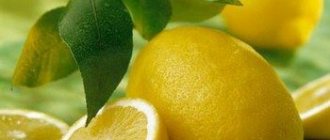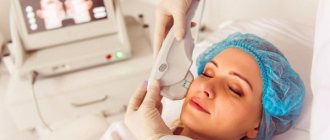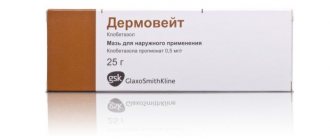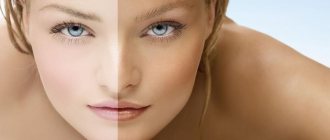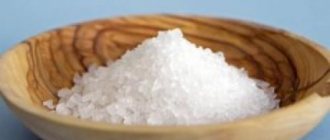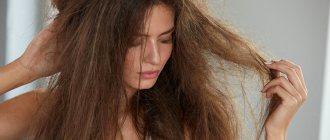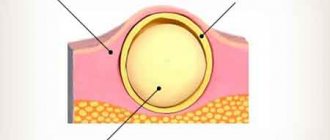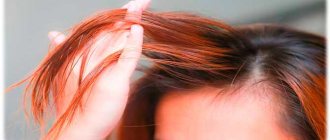Question to the expert: When to sound the alarm if your hair is falling out
answers to most of the questions that concern us online. In a new series of materials, we ask exactly these questions - burning, unexpected or common - to professionals in a variety of fields.
Caring for your hair and scalp often seems like a hassle-free process - we are used to eliminating most problems with cosmetics or, at best, pharmaceutical products. Indeed, hair loss is rarely a serious cause for concern, and choosing the right care can help maintain healthy appearance and stable skin function. We asked a specialist about when it’s really worth sounding the alarm and going to the doctor.
Elena Dmitrieva
dermatovenerologist of the highest category, trichologist, Eliokap brand expert
Most often, people turn to a trichologist with the problem of hair loss. If you see that you are losing more than 10–15% of hair per day (meaning all over your body), and this process has been going on for several months, be sure to consult a doctor. Various reasons can trigger hair loss. For example, it's autumn, and many people are already experiencing seasonal loss. The fact is that in the process of formation of hair growth, as well as the synthesis of melanin (including in the skin), certain amino acids take part. If throughout the year the hair regularly receives a certain amount of amino acids, then in the summer, when tanning occurs, almost 80% of these amino acids are spent on the formation of melanin in the skin. Thus, the hair, lacking building material, weakens, thins and falls out.
Under the influence of ultraviolet radiation, free radicals are formed in skin cells and hair follicles, which, as they accumulate over the summer period, inhibit the process of cell division and hair matrix synthesis. As a result, the weakening of the hair follicles progresses, and, as a result, hair loss occurs. What gets damaged and dies in the summer falls off in the fall—the whole process takes two to three months. To prevent and minimize negative consequences, regularly nourish and strengthen your hair follicles. Leave-in lotions and serums for the scalp with amino acids, natural extracts (nettle, ginger, turmeric, juniper, sage, aloe), essential oils (lemon, orange) and plant stem cells are perfect.
Separately, it is worth mentioning androgenetic hair loss. Hereditary hypersensitivity to dihydrotestosterone (a biologically active form of testosterone formed by interaction with the enzyme 5-alpha reductase) leads to inhibition of hair follicles. About 80% of hair loss cases in men and 30% of cases in women are of androgenetic origin. In women, in this case, the temples and parietal zone (the so-called “cap zone”) suffer. In this case, you must first check the functioning of the thyroid gland, adrenal glands and ovaries, and also undergo a computer examination of the hair and scalp. Unfortunately, it is impossible to eliminate the root cause of this loss, but you can block it. The doctor will select an individual course of medications for you. Please note that there are medications based on menoxidil, the main disadvantage of which is a sharp withdrawal syndrome. I recommend herbal products such as verbascoside (lilac stem cells), which effectively blocks the action of 5-alpha reductase and dihydrotestosterone.
Those hairs that are damaged and die in the summer fall off in the fall - the whole process takes two to three months
Do not delay visiting the doctor if you have oily scalp. There may be a malfunction of the sebaceous glands - in this case it is necessary to find and eliminate the cause. Very often this happens due to the wrong choice of shampoo. The fact is that products with a high content of surfactants (which are about) and inappropriate pH disrupt the biobalance of the skin. As a result, the sebaceous glands begin to work more actively and secrete more secretions to protect the hair follicles. To avoid this problem, choose moisturizing, alkali-free shampoos with an ideal pH of 5.5 for the scalp and hair. For dry scalp and different types of hair structure, it is also recommended to select special care.
Contact a trichologist if you notice that your hair has become thinner, weaker and growing slower. The fact is that a thick layer of keratinized epithelium, residues of styling products and sebaceous plugs accumulate on the scalp, which negatively affects the hair follicles: blood circulation worsens, the skin does not breathe. Sebaceous plugs can literally seal the hair follicles so that hair simply stops growing from them. At the same time, you can make masks, use serums and lotions as much as you like - it will be very difficult for active ingredients to penetrate through this layer. Using computer diagnostics, you can see with your own eyes all the dirt and clogged pores. To deeply cleanse the scalp, the doctor usually prescribes a course of peelings with mild acids. I advise you to pay attention to products based on lactic acid, since it does not dry out or loosen sensitive scalp, unlike, for example, salicylic and glycolic acid.
The appearance of dandruff is also a serious reason to visit a trichologist. Don't forget that dandruff is not just flaking of the scalp, but a fungal disease. Only a doctor can determine the type of dandruff and prescribe a course of treatment.
Keratin plugs. Causes
Keratin and lard are the substances that make up hyperkeratotic plugs (comedones). Puberty is the period when blockages of the sebaceous glands are most common. The reason is hormonal changes leading to a rapid increase in sebum produced by the glands, which affects the cleanliness and patency of the ducts. Which ultimately leads to blockage of the excretory passages of the glands.
Hormonal imbalances are the main provoking factor for clogs in the pores. In the future, hormonal imbalance creates additional problems, manifested in increased sweating, oily seborrhea.
Severe oily facial skin
The etiology of the formation of sebaceous plugs may differ from case to case, however, the main reasons for increased oily skin are well known:
- Heredity.
- Genetic predisposition is a significant factor for those whose close relatives have problems with an oily face. For them, the likelihood of developing strong fat content automatically increases.
- Chronic infections.
- Pathological changes that appear against the background of infections provoke excess fat on the pores of the face.
- Hyperandrogenism.
- In women, it is a type of hormonal disorder expressed in the excessive synthesis of female sex hormones. Provokes the formation of acne on the face.
- In men, this is a failure due to the use of synthetic steroids to increase muscle mass.
- Polycystic ovary syndrome.
- Increased concentration of sex hormones against the background of metabolic disorders in the ovaries.
- Obesity.
- An increased amount of fat on the surface of the face and increased sweating are natural manifestations of obesity.
- Liver pathologies.
- Fatty degeneration and hepatitis provoke an increase in the amount of fat on the surface of the facial skin, unable to cope with the functions of removing excess male hormones.
- Female exhaustion, cachexia, vitamin deficiency.
- A deficiency of material for hormone production upsets the balance.
- Mental illness, stress, depression, nervous overload and other manifestations that disrupt the functioning of the central nervous system.
- Diabetes .
- The disease causes a number of multisystem disorders that affect the functioning or condition of internal organs.
- Diseases of the digestive system and gastrointestinal tract.
- Poor nutrition and abuse of difficult-to-digest foods provoke metabolic disruptions.
Salon scalp peeling: taking care of hair health
To maintain their natural beauty, they often resort to salon procedures. Everyone is already accustomed to peeling the face or body, but scalp peeling in the salon is not so often chosen. The epidermis must be exfoliated; this removes dead cells, thereby solving many problems.
It helps to get rid of not only excess fat, but also cosmetics. You will be surprised, but shampoos, hair masks, gels, foams, and hairsprays can accumulate on the scalp. From such residues a plug is formed, which must be removed.
To maintain their natural beauty, they often resort to salon procedures. Everyone is already accustomed to peeling the face or body, but scalp peeling in the salon is not so often chosen. The epidermis must be exfoliated; this removes dead cells, thereby solving many problems.
It helps to get rid of not only excess fat, but also cosmetics. You will be surprised, but shampoos, hair masks, gels, foams, and hairsprays can accumulate on the scalp. From such residues a plug is formed, which must be removed.
Deep cleansing hair shampoo
Shampoo for deep cleaning of hair is designed to thoroughly cleanse the hair and scalp of residues of cosmetics, mousse, hairspray, foam, silicones, sebum and other contaminants.
Deep cleansing is necessary before coloring, chemistry, toning, lamination and other salon procedures, especially if you do these procedures at home. That is, by renewing the keratin layer as much as possible, it makes the hair more susceptible to the nutritional effects of subsequent products.
Using a deep cleansing shampoo is no different from using regular shampoo. But, since shampoo for deep cleaning of hair opens the scales, be sure to apply a good professional mask to your hair after shampoo, and its effect will be better than after regular shampoo.
Now almost every manufacturer of hair cosmetics has a deep cleaning shampoo in their line, we decided to provide you with the most popular ones:
- CHI Clean Start (USA)
- Schwarzkopf Professional Bonacure Hair & Scalp Deep Cleansing Shampoo (Germany)
- Goldwell DualSenses Scalp Specialist Deep Cleansing Shampoo (Germany)
- Estel ESSEX Deep Cleaning (Russia)
- Wella SP Expert Kit Deep Cleanser (Germany)
- Joico K-Pak Chelating (USA)
- Matrix Total Results Pro Solutionist Alternate Action Clarifying Shampoo (France)
The principle of operation of a deep cleaning shampoo is similar to that of a scrub.
Effect on hair
This procedure is prescribed both for the treatment of serious hair problems and for prevention. Regular cleansing helps:
- getting rid of dandruff,
- increased cell regeneration,
- improved cellular metabolism,
- good skin tone,
- proper nutrition, blood supply to the follicles,
- getting rid of sebaceous plugs,
- saturating hair with oxygen, beneficial elements, vitamins,
- effective action of medicinal products.
Peeling will give you a feeling of lightness, cleanliness, and your hair will no longer be dull. Therefore, professional salons often advise starting hair care with an exfoliation procedure.
Why is it needed and in what cases should it be done?
The procedure is recommended in the following cases:
- if you need to strengthen hair that has become brittle or has begun to fall out (meaning minor hair loss);
- if you need to get rid of dandruff;
- if necessary, speed up the hair growth process and increase its volume;
- with hyperkeratosis - this is the name for thickening of the stratum corneum of the epidermis;
- with increased activity of the sebaceous glands.
As you can see, the procedure is useful in many cases. In addition, it can be used to prevent various problems.
The essence of the procedure
Many people, having learned about the healing power of cleansing, wonder how to cleanse their scalp. This can be done independently using professional remedies or traditional medicine, but it is most effective to contact specialists. You will be provided not only with high-quality materials and correctly selected products, but also with competent control over the entire procedure. This service is now available in many hairdressers.
The scalp will not only be deeply cleansed, but also saturated with active ingredients.
The standard procedure consists of several stages:
- hair must be clean, it can be dry or wet;
- a special product for professional exfoliation is applied;
- the master carefully treats each area of the skin with it, and then begins the massage;
- the remnants of the exfoliating agent are thoroughly removed along with plugs, dead cells and sebum;
- The master selects a mask or serum for your hair type for the final stage of peeling. It can be nourishing, restorative, adding shine or volume to hair.
The entire procedure usually takes about an hour. It is recommended to resort to salon cleansing once or twice a month. If you are concerned about oily scalp, you should increase the number of visits to three.
It is most effective to contact a trichologist before the procedure; he will advise which hair problem to pay attention to first.
Types of peeling
Cleansing techniques vary depending on your preferences. Each of them is effective in its own way and solves a certain number of problems. The most popular types of peeling are:
Mechanical is the simplest, and can be used at home. Cleansing the skin in this way means exposing it to scrubs. Massage movements remove all unwanted cells, and the skin is saturated with nutrients. Mechanical peeling is good for dandruff and an overly oily scalp, but is undesirable for hair loss and sensitive, damaged skin.
The chemical is prescribed by a trichologist or cosmetologist. It is carried out in the salon using special acids: malic, tartaric, lactic, citric, almond and others. Cleansing the dead layer of the epidermis is quite effective; it dissolves under the influence of active substances. This peeling promotes regeneration, activates growth, and effectively helps with dandruff, hair loss and many other diseases. Not recommended for individual intolerance and skin inflammation. Peeling is best done in sessions (five to seven at weekly intervals).
Gas-liquid is a fairly new salon procedure. The skin is processed contactlessly using a special device. The treatment solution is supplied with gases (oxygen and carbon dioxide) under high pressure. Infection cannot be introduced in this way, the risk of an allergic reaction is minimal, the effect is immediate, suitable for all ages and hair types. The effect lasts for a long time after several courses. Cures many problems, not recommended for hypertension and fever.
Scalp peeling
Cleanses, effectively removes dead cells and sebaceous plugs
, stimulates hair growth, activates “dormant” hair follicles, which promotes the growth of new hair, strengthens roots, fights dandruff and premature oiliness at the roots, regenerates, improves blood circulation, revitalizes, perfectly restores hair and scalp!
About effectiveness: Scalp scrub is an effective and efficient remedy against hair loss, dandruff and combating oily hair at the roots. Hair stays cleaner longer. Thanks to useful and natural ingredients, it allows you to most effectively cleanse the scalp, strengthen the roots, and get rid of toxins. The scrub is a powerful tool for stimulating hair growth, because it increases blood circulation and nourishes the roots. Even if you have dry and sensitive skin, the scrub will still be useful, because in addition to its miraculous properties, it also makes all subsequent hair care procedures more effective. After using the scrub, all masks (especially for stimulating hair growth) are much more effective and all the nutrients penetrate deep into the scalp.
Peeling perfectly cleanses the scalp, removing dead particles from the surface of the skin, excess fat, dirt, and remnants of styling products. The hair follicles are filled with oxygen, blood circulation increases, and the hair receives proper nutrition. Also, after scrubbing, the skin absorbs nutrients better. Thanks to all this, the hair is strengthened, thickened and the growth of new hair is activated, due to which the hair becomes thicker.
Preparation of the scrub: - Take 2 tablespoons of iodized salt (you can use regular table salt), and for girls with dry and sensitive scalp, fine salt is suitable; — Add 2 tablespoons of clay (you can take any clay depending on your hair type). I most often use blue clay, as it has excellent cleansing properties, stimulates hair growth, and has an anti-inflammatory effect; - Next, add water. I add by eye. You can add instead of water: decoctions and infusions of herbs, green tea, mineral water, hydrolates, whey, honey water, kefir. Mix thoroughly until the sour cream consistency is uniform; — Then add 8 drops of any essential oil: lavender, tea tree, rosemary, mint, rose... I add rosemary essential oil because it stimulates hair growth, strengthens roots, and prevents hair loss. And mix thoroughly again. Ready!
- 3 tablespoons of sea salt, without any additives or flavorings:
- Fine salt scratched the skin less.
- Sea salt is rich in iodine. By the way, according to many experts, the so-called iodized salt sold in our stores is essentially fiction. Because the scrub is on the head for impact (don’t think that it won’t work that way. On the contrary, clay perfectly cleanses the pores, drawing out all the harmful things that have accumulated there). I usually massage for 5-10 minutes. (this is a great head massage). Then I simply leave the scrub on for another 10-15 minutes, while doing shower chores. Then rinse your hair thoroughly with water. We wash our hair with shampoo. Afterwards we apply our favorite hair mask (their effectiveness increases many times!) and leave for 10-15 minutes. and wash it off. Then a balm or rinse... Apply from the middle of the hair to the ends and leave for 5 minutes. After applying the balm, I always comb my hair with a comb with thick, sparse teeth, and again apply a smaller amount of balm, more to the ends. So I stand these 5 minutes. Wash off the balm generously. Ready!
Do not be alarmed if during peeling your hair falls out a little more than usual. Don't worry( !
) - this is already damaged hair, it would still fall out a little later. BUT! Increased hair loss should stop after 3-4 procedures. Your hair will look gorgeous after this procedure! Shiny, voluminous, nourished, strong!
View of the scalp under a microscope before and after peeling:
It is recommended to carry out this type of peeling constantly, once a week. For those who have dry or sensitive skin, use the scrub once a month.
Hurry up and try it!
For the especially busy and lazy there is an express peeling
: Mix
shampoo and baking soda 1:1 I wash my hair with this product as usual.
__________________________ PS:
We have a pharmacy near our house where you can check your scalp and hair under a microscope for free... That's where I first learned about sebaceous plugs. In general, my scalp is in good condition: not prone to dandruff and itching. but prone to fat content and there are solo plugs. The hair is also in generally good condition: a lot of new hair, not falling out, not brittle. but they split at the ends. I was advised to have a professional peeling for the scalp to remove sebaceous plugs... She told me how the skin and hair quality would change after such peeling... She said about the ends - cut them more often (I usually cut them once every 6 months) and apply balm more generously to the ends, longer keep for a while (previously I kept it for 1-2 minutes), and also recommended cutting with hot scissors at a temperature of 110 degrees. Professional peeling like this, in a salon, costs on average 6 thousand rubles, and it is recommended to carry it out in a course, 1 time per week, 10 procedures, every 6 months. repeat. So I had to give it up and turn to the internet. At that moment I came across these recipes and decided to try them. From the first peeling, the quality of the hair improved significantly, the hair remained clean longer, whereas, usually, the next day, the head looked as if it had not been washed for a week. After some time, I came back to check my skin and hair... And the girl who did the check was very complimentary... I clearly saw the result. The photos are from the Internet, of course, not mine, but the meaning is the same - after all, many people don’t know what it looks like under a microscope.
In general, everything is in the post. I think I tried to describe it in detail.
Deep cleaning: what is it for?
Deep hair cleansing is an effective cleansing of hair using special shampoos and scrubs. Deep cleansing is necessary for complete hair care, it is designed to thoroughly cleanse the hair and scalp of all kinds of impurities that regular shampoo does not provide, and it also strengthens the hair, awakens dormant hair follicles and stimulates growth.
For the health of the scalp and hair, only superficial cleansing is not enough; you need to periodically use products that deeply cleanse the pores, allowing the scalp to breathe.
The condition of the hair depends not only on what shampoos and masks we use, but also on how regularly and efficiently we cleanse the scalp, namely deep cleansing of the skin, which removes all impurities, dead cells and styling products. After peeling, blood supply to the hair follicles improves and all beneficial vitamins and substances penetrate better into the scalp. After peeling, it is very good to rub in various anti-hair loss serums, lotions, tonics; their properties improve several times.
Today there are several types of scalp peeling:
- Chemical
- Fruit
- Ultrasonic
- Gas-liquid
- Professional products for deep cleansing of hair and scalp
At home, scalp cleansing is carried out using sea salt, clay, colorless henna, activated carbon, essential and base oils.
There are no contraindications to the use of peeling, but it is still advisable to postpone peeling for a while or not do it at all if there are:
- various types of damage to the scalp (wounds, scratches, ulcers);
- inflammation and irritation on the scalp;
- too sensitive scalp;
- individual intolerance to the components of the products.
Before using homemade scrubs, determine whether you are allergic to the components or have other contraindications. The procedure will, of course, be beneficial if you follow the recommendations:
- mix the scrub immediately before the procedure;
- peeling is done on dirty hair before washing;
- first you need to wet your scalp well (3-4 minutes) to open the pores;
- then we begin to rub the scrub into the scalp along the partings, doing a light massage;
- Massage for about five minutes and leave the scrub on your hair for another five minutes, and then wash your hair as usual.
The most popular homemade scrub recipe is based on sea salt and natural base oil:
- 2 tablespoons of medium-ground sea salt;
- 1 tablespoon of base oil (olive, grape seed, sesame, hemp);
- 5-8 drops of essential oil (bay, rosemary, mint, lemon, orange, patchouli).
Exfoliating the scalp should not be done too often, as this can lead to irritation, dryness, itching or even dandruff.
If the scalp is prone to oiliness, then peeling can be done once every two weeks, undergo 4-5 procedures, and then take a break for a month.
If your scalp is normal or prone to dryness, peeling can be done once a month. And if the scalp is sensitive, then even less often.
Why do you need peeling?
Every day, about 50,000 dead cells form on the human body. A third of them fall off, but the rest remains on the skin, mixing with sebum, contaminating the pores, contributing to the formation of dandruff and other troubles. This biological process is irreversible and new cells are formed in place of dead cells, but the problem is that over time it becomes more difficult for the body to get rid of pollutants.
Scalp scrub
Benefits of scalp peeling:
- Helps against hair loss by stimulating hair follicles;
- Relieves dandruff;
- Used to improve blood flow to the head;
- Used to cleanse the roots of hair strands from sebum and dirt.
There are several types of peeling :
- Saline;
- Chemical;
- Fruit;
- Ultrasonic;
- Professional (using special tools).
Video: hair scrub recipe
Sebaceous plugs on the face. How sebaceous plugs form. Consequences
Due to the formation of sebaceous plugs on the face, the functions of the skin are disrupted, which leads to inflammation.
Sebaceous plugs mainly appear on the face: on the nose, chin, cheeks and on the head near the hairline, since sebum production is increased in these places.
On the face, sebaceous plugs mainly appear in the form of various acne.
It is important to know! In some cases, a large secretion of fat is a sign of a nervous and mental disorder in a person.
During blockage, pores can become clogged:
- Keratinized cells.
- Bacteria.
- Microorganisms.
- Sebum.
Abscesses, skin inflammations, atheromas, various tumors, acne, pimples - all this can be the consequences of blockage.
There are three types of diseases.
Abscesses, skin inflammations, atheromas, various tumors, acne, pimples and poor health can be the consequences of blockage.
The disease appears due to metabolic disorders in the body during puberty. Most often it manifests itself in the form of acne.
They arise due to damage to the vessels located next to the trigeminal nerve.
The cause may be disturbances in the functioning of the gastrointestinal tract; it also occurs due to neurological disorders in women during menopause.
This disease is characterized by the appearance of rashes in the form of red spots on the skin surface.
It is recommended to consult a doctor before starting treatment. It is necessary to exclude salty and spicy foods from the diet at the time of treatment.
Basically, it develops due to a reaction to many cosmetics (creams, mascara, etc.).
It is recommended to consult a doctor before starting treatment. It is necessary to exclude salty and spicy foods from the diet at the time of treatment.
How to cleanse the scalp with traditional recipes
The simplest and most famous peeling for the scalp is salt peeling; it can be easily prepared at home and helps strengthen hair and increase thickness. To prepare it you will need a teaspoon of sea salt, 10 drops of cosmetic ether (we recommend using peach or coconut), 5 drops of burdock oil. Mix all ingredients and heat over low heat. Do not boil, then cool the mixture. Rub the resulting pulp into the scalp with gentle massage movements; you can use cotton pads, tampons or fingers. Continue the massage for 5 minutes, then leave the mixture on your head for another 2-3, after the time has passed, rinse with warm water. This is a water-soluble composition, so getting rid of salt in your hair is not difficult; it is much more difficult to wash off the oil. To do this, after washing off the mineral, you need to take a mild shampoo. For example, baby soap or foam from baby soap, and thoroughly clean the hair roots.
Professional products
Many people simply don’t have the free time to make their own mixture, so let’s take a look at the list of professional scalp peeling products. All of them can be classified according to the form of the drug (shampoo, mask, gel, cream, paste), but what is more interesting is their focus and effectiveness:
- Professional biopeeling for the scalp Nioxin (Nioxin Scalp Renew) – provides cleaning with enzyme elements and salt, helps stop hair loss and accelerate growth. Contains alpha acids and vitamins, use with caution - allergies are possible. Apply to damp skin, leave for 10 minutes, but during this time it is advisable to massage the hair. Wash off with shampoo;
Photo – Nioxin
- Bonacure Pre-Shampoo Peeling Schwarzkopf is a shampoo that provides effective scalp cleansing. Cosmetics from this company are aimed at restoring the balance of hair and scalp;
- L`Oreal Professionnel Expert Power Repair - cleanses pores well and promotes healing of small wounds on the head. L'Oreal is quite an expensive drug, but very effective;
- Teotema (TeoTema) is an imported phytopilling that contains extracts of natural herbs and minerals. It can even be used on a child’s head (for example, for rashes, seborrhea, pimples or acne);
- Reibi Utena – contains glycolic acid, which is excellent against accumulating skin particles and dandruff flakes. When exposed to this product, the pores open and are cleansed from the inside;
- Lebel – normalizes the balance of the surface of the dermis of the head, clears acne and blackheads, stimulates hair growth;
- Keune - this company is famous for its hypoallergenic and effective products. Consists of nutritional components, vitamins and minerals;
- Belita-Vitex is the best phytoessential skin peeling, it will gently and without allergies cleanse the skin, add shine to the curls, and retain freshness for a long time after washing. It is recommended to buy a line of drugs.
Photo - Applying peeling to the head
Other products: kemon, payote, farmavita, ezheneperma, estelle, indola, clean line. Any products for peeling the scalp should be purchased in professional stores; they can also be ordered on the official websites of manufacturers or purchased by visiting a good beauty salon.
The newest methods for clearing scales from the head have also appeared - this is ultrasound therapy. With the help of sound, which creates air vibrations, dead cells are separated from the skin and the processes of “awakening” the hair follicles are activated. The procedure is effective, but expensive - from 2000 rubles per session. Laser peeling is not used for the scalp.
Tips from a hairdresser:
- You need to apply the products to damp skin, then the abrasive particles will damage it less;
- Peels can be used no more than twice a week; Many people advise that you prepare for the session - do not wash your hair. This is not entirely true; it’s really better not to wash dry hair or sensitive scalp, but oily strands are pre-cleansed;
- Mesotherapy, nourishing masks and massages are perfectly compatible with peeling, but not painting, so during the dermis cleansing course, refrain from using coloring chemical compounds (henna is allowed);
- Peeling is full of benefits, but only if used carefully and correctly. If you increase the number of procedures, you risk drying out the dermis and worsening the condition of the strands.
Peeling cleansing is a wonderful modern technique that will help significantly improve the appearance of your hair, making it tidier and more manageable. If you have experience using the techniques listed above, we will be glad to read your feedback in the comments to the article.
Masks for cleansing
For improved performance when cleaning pores, it is important to follow the sequence of actions. Below we briefly describe the proposed scheme.
Steaming pores
First of all, you need to carefully remove your daytime makeup. Pre-apply emollients to the skin to maximize pore opening. The best option would be hot herbal compresses. You can also make steam baths.
Steam the herbal composition in advance and give it time to brew. Then dip a terry towel in it, squeeze it a little, and apply it to the surface of your face. Leave the compress on for a total of five minutes. If the towel cools quickly, dip it again in the warm herbal solution. For dry skin, three minutes will be enough.
To better steam the pores, you can hold your face over a heated infusion of herbs, for example, chamomile or St. John's wort flowers, sage leaves or calendula. You can add a couple of drops of any essential oil to the decoction. Such procedures are contraindicated if there is a vascular network on the skin - rosacea, individual intolerance or skin diseases.
We remove pollution
To do this, you can prepare scrubs and mask compositions yourself. Home-made products should be applied to the skin twice in seven days if you have an oily or combination type. For dry or normal type, one per week is enough.
We suggest you familiarize yourself with Acid peeling during pregnancy
Wash off masks with water at room temperature. Just pat your face dry with a terry towel, do not rub. Scrubs can be purchased ready-made with factory-made fillers. In this case, the main thing is to choose a composition that suits your skin type.
If the skin is a little dry, then choose a mild product so as not to injure or overdry the surface. For the rest, compositions containing harsh abrasive particles are suitable.
Narrowing the pores
To narrow the expanded porosity of the skin, it is recommended to use available means, for example, solution of hydrogen peroxide, fresh aloe juice, and sour citrus varieties. Option - rich green tea, various mask products.
Moisturizing your face
After cleansing the skin, the final step is to apply an intense moisturizer to the surface. Oils with high fat content and creams with a high nutritional effect are usually not recommended. These products heavily clog and clog enlarged pores.
The cleanser must contain components that can additionally both dry the skin and have an astringent effect. This can be chamomile extract, aloe juice, citrus sour varieties. When washing, the products should be used in the morning and before bed.
The final cleansing stage is the use of tonic. For oily types or skin with existing problems, select a product that must contain zinc oxide. At the end of the cleansing process, the skin is lubricated with a moisturizing cream composition, according to the type.
When deep cleaning enlarged pores, you can use homemade products. The mask mixture is applied to the skin twice a week. It will do an excellent job of removing dirt deposits in the form of blackheads. Also, the pores are freed from sebaceous accumulations and toxins, while they narrow, which improves the appearance as a whole.
Mask products usually contain additional elements, for example, microelements and vitamin complexes. They will more than saturate the skin with everything it needs, and blood flow will also improve.
Once a decade you should cleanse the skin to rid the surface of keratinized or dead particles. An option is exfoliating procedures in the form of peeling. It doesn’t matter where you do them: in a beauty salon or at home.
Before cleaning the surface and applying masks, you should first understand the reasons that lead to clogged pores. Most often this is due to inappropriate skin care and the use of poor quality cosmetics. By following the recommendations of cosmetologists, you can avoid consequences. One of the regular rules is the use of cleansing masks.
Charcoal mask
Today, women are increasingly using activated charcoal to cleanse their skin at home. This is the most popular mask. Of course, you can buy a ready-made product. Below is a recipe for making it yourself:
- Buy activated carbon at the pharmacy kiosk. Crush two tablets into powder.
- Heat the milk on the stove until hot, but do not boil. Up to 50-60 C will be enough.
- Crystalline gelatin should be dissolved in warm liquid in advance - 1 tbsp. l., then send powdered coal there.
- The ingredients are mixed until smooth without any lumps.
- The composition is applied with a brush and evenly distributed over the surface. It is advisable to steam your face before doing this.
The mixture thickens very quickly, so it is recommended to apply it to the surface immediately. After a short period of time, the mask will harden. Can be removed carefully. Be prepared that there may be some slight soreness. Moisturize your face.
A lightweight mask that does not cause irritation. At the same time, with its help, the contents of the pores are quickly removed. Suitable for all skin types. Before starting the procedure, it is recommended to steam the surface over a herbal decoction for several minutes. To prepare it, you can take plantain leaves or chamomile flowers.
We suggest you read how long it takes for a wound to heal after removal of atheroma. Atheroma: consequences of surgery and proper care
Preparing the mask.
- In a small container, dissolve gelatin crystals - 25 grams in warmed whole milk - 20 ml.
- Then place the dishes inside the microwave oven, turn on the maximum mode. It is enough to hold for 20-30 seconds for the gelatin granules to completely dissolve.
- Allow the mixture to cool slightly.
- Add the white of a chicken egg, mashed until white, to the warm liquid.
While the mixture is still warm, use a brush to apply it to the surface of the face and distribute it evenly. Special areas of influence are the nasal wings, forehead, and chin. It is not recommended to apply the composition near the eye sockets and lips; it can cause the appearance of fine wrinkles.
After about 10-15 minutes, the cleansing mask will harden slightly. After removal, grease stains and black dots will be visible on the thick film. After such actions, the most persistent mud layers are removed.
If the clogged contents of the pores are too deep, then home methods will not always help remove dirt and grease. In such cases, you can use other types of masks, for example, with hydrogen peroxide and yeast. Cleaning removes heavy contaminants.
Prepare your own mask:
- Heat milk on the stove until warm - 15-20 ml.
- Dissolve crushed yeast in this liquid - 15-20 grams.
- Add 10 ml to the warm mixture. peroxide.
- Mix the ingredients and let stand for a quarter of an hour.
Using a sponge or cotton swab, apply the product evenly to the surface. Leave for 30 minutes, then rinse with herbal infusion. Yeast dries out the skin, so after the procedure it is important to lubricate it with a moisturizer.
Both granulated sugar and baking soda can easily remove clogged pores. It is often undesirable to use them, as they can cause peeling of the skin.
The mask is easy to prepare:
- Take equal parts of sugar and soda - 15 grams each.
- Beat the chicken protein into a strong foam.
- Mix the ingredients and add hydrogen peroxide - 1 tsp.
- The skin is steamed and the product is applied for 30 minutes.
- The problematic surface is massaged with fingertips. There is no need to make any effort, otherwise you can provoke a burning sensation.
Clogged enlarged pores are caused by increased work of the sebaceous glands. An additional factor to this is inept surface care, insufficient cleansing, and the use of low-quality cosmetics. Once the causes are eliminated, the skin will glow again.
About the author: Larisa Vladimirovna Lukina
Dermatovenerology (Internship in the specialty of dermatovenerology (2003-2004), Certificate of the Department of Dermatovenerology of St. Petersburg State Medical University named after academician I.P. Pavlov dated June 29, 2004); Confirmation of the certificate in the Federal State Institution "SSC Rosmedtekhnologii" (144 hours, 2009) Confirmation of the certificate in the Rost State Medical University of the Ministry of Health of Russia (144 hours, 2014);
Professional competencies: management of dermatovenerological patients in accordance with procedures for the provision of medical care, standards of medical care and approved clinical protocols. Read more about me in the Doctors-Authors section.
